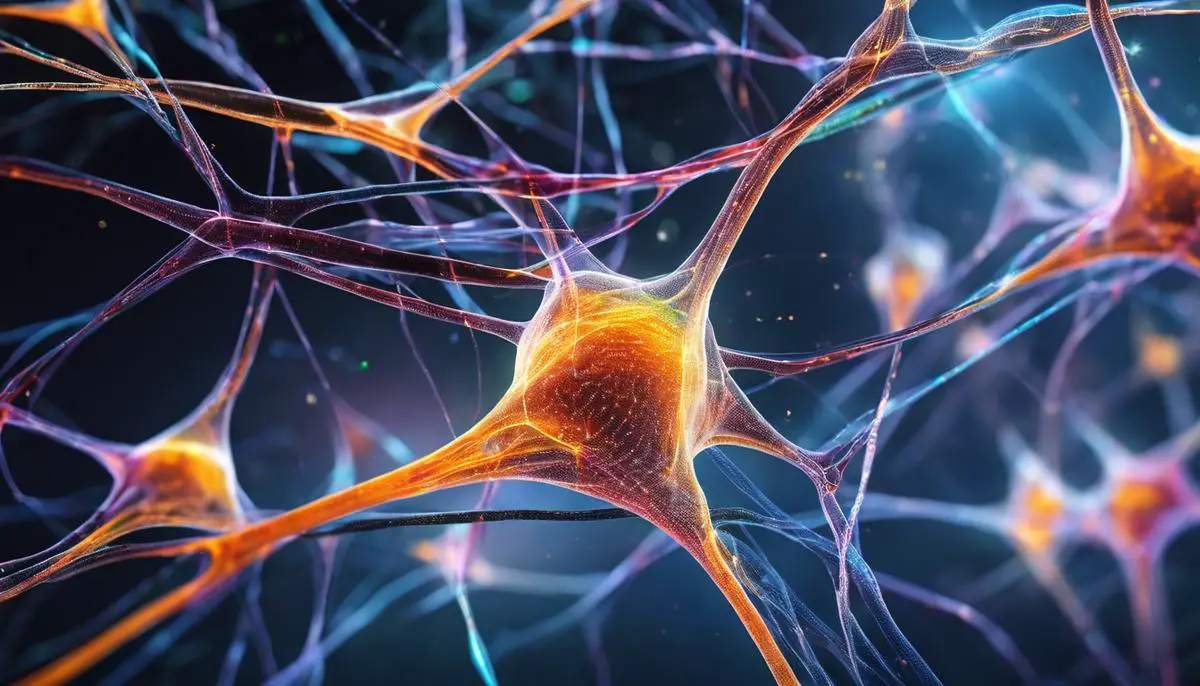In an era increasingly defined by innovative technology, Insight GPT threads its way with transformative implications for machine learning and natural language processing fields. Tecnhological marvels are rarely born in isolation, and Insight GPT is no exception; it is the fruit of a meticulous intellectual endeavor, steeped in historical contexts and anchoring on the collaborative genius of thinkers, engineers, and developers. This discourse aims to unravel this journey, exposing the intricate cogs that power this formidable machine, pivoting from its background and technical aspects to the profound implications punctuated by its dawning, extending into the dynamic tapestry of its future potentials.
Understanding the background of Insight GPT
The Founding Principles and Evolutionary Journey of Insight GPT: A Comprehensive Overview
The unfolding journey of artificial intelligence (AI), especially pertaining to Generative Pre-training Transformer models (GPT), offers a narrative worthy of scholarly attention. Among the fascinating AI developments is Insight GPT. Its foundations and evolutionary journey serve as a testament to our unwavering exploration of intelligence within the confounds of computational realms.
Fundamentally, Insight GPT was sired from the philosophical, scientific, and mathematical studies on intelligence that humans have pursued for centuries. Its establishment rests on sound algorithms, vast databases, and advanced neural networks, tethered together by the sheer alacrity to recreate a semblance of human intelligence.
Insight GPT is built on an architecture of transformer-based models. The repertoire of these models, which originates from the Attention Is All You Need paper by Vaswani et al. (2017), is the cornerstone of remarkable AI developments such as OpenAI’s GPT-2 and GPT-3. The guiding principles of Insight GPT rely heavily on these models, within which vast networks of neurons and multitudinous layers of transformers are trained on substantial corpuses of text data.
Meritoriously, Insight GPT transcends the limitations of earlier transformer-based models by incorporating innovative training practices and refining algorithms allowing it to generate surprisingly coherent and contextually relevant sentences, make predictions, and even answer questions, emulating the thinking process of a human brain.
In a sense, Insight GPT is a grand manifestation of evolutionary computation that pays homage to the venerable field of artificial intelligence. Its sophisticated learning algorithms allow it to adapt, optimize, and assimilate new data, thus progressively enhancing its capacities and functionality over time.
Historically, the evolution of Insight GPT can be viewed as a remarkable trajectory from mere deterministic, rule-based operations to the sophisticated implementation of deep learning and transformative algorithms exhibiting an uncanny degree of human-like discernibility and creativity.
This evolutionary journey is far from complete, however. As it stands, Insight GPT is at the forefront of the AI frontier, continuous adaptation and learning are the linchpins in its enduring survival in the race towards artificial super-intelligence.
An in-depth analysis at Insight GPT reveals not just an AI model but an amalgamation of human intelligence, ambition, and aspiration to decode and reconstruct the building blocks of the one thing that sets us apart from other life forms; our mind. As Insight GPT continues to evolve and adapt, one can’t help but marvel at the journey it has taken and anticipate, with both intrigue and curiosity, the strides it has yet to make.

Exploring the technical workings of Insight GPT
Delving deeper into the algorithmic processes of Insight GPT, it becomes increasingly fascinating to consider the proficiency and complexity of these models. At the core of Insight GPT and other generative pre-training transformers is the crux of unsupervised learning – a field that has indeed revolutionized the landscape of machine learning.
Insight GPT revolves around a transformer-based system, which is the engine that processes language data. This system is designed to pay heed to prior input data and create output that is contextually applicable. The pivotal architectural design of transformer models is the use of “attention mechanisms,” essentially ranking input data according to importance and assigning higher computational resources for processing it. This strategy enables Insight GPT to dispense coherent, thematic, and contextual language data.
The application, however, is not as simple as it appears. Consider an orchestra, where the success of the melody relies not only on individual instruments but their seamless integration and harmony. Similarly, Insight GPT’s strength lies not just in its novel algorithms but the synchrony, layers and depth of its models.
One such algorithm is the Transformer Decoder. This crucial part of the system deciphers the meaning of a series of words by scrutinizing the entire set of entered words, instead of sequentially executing a word-by-word evaluation. This enables it to understand complex sentences more coherently and to generate a more naturally flowing human-like text.
Under the umbrella of machine learning algorithms, Insight GPT primarily uses the ‘masked language model’ objective. This model covers a section of input and tasks the transformer with predicting missing information based on context. This, combined with a ‘next sentence prediction’ objective, provides the capability for the model to generate coherent text in response to questions or textual prompts.
When it comes to the nitty-gritty of Insight GPT’s learning process, it may be interesting to consider the gradient descent algorithms. This model uses a substantial amount of data to iteratively adjust its internal parameters. It aims to unceasingly lower the difference between its outputs and actual outputs until it reaches an optimal state – a process indicated with the metaphor of descending a gradient.
In the multiverse of neural networks and machine learning, Insight GPT proudly stands as an impetus to optimally learning from unstructured and unlabeled data. It does not just take a bird’s eye view of the data, but dives deep into its trenches. The system examines the intricate patterns, connects the dots, and derives valuable intelligence to enhance its performance, an intriguing interplay of complexity and simplicity, ingenuity, and brilliance.
Despite being reserved, it wouldn’t be inappropriate to say that Insight GPT is an ode to technological advancement, a realization of evolutionary computation, and a beacon to future strides AI will take towards perfection. The beauty within these codes, algorithms, and the impalpable artificial neurons firing within is a testament to the plethora of untaped possibilities within the vast realm of AI, a testament Insight GPT proudly upholds.
Insight GPT isn’t just a model or an algorithm. It’s a prodigious existence leading the way towards a future immersed in the sophistication and intelligence of artificial constructs. It’s more than just code; it’s a testament to human ingenuity and the pursuit of translating theoretical comprehension into practical, tangible, game-changing results.

Assessing the performance of Insight GPT
In a deeper exploration of Insight GPT, one comes across certain fascinating dimensions of its performance metrics. The model addresses the three crucial parameters of accuracy, recall, and the management of complex datasets with a level of precision that merits discussion.
Insight GPT’s accuracy, one of its prime performance indicators, is commendable. The model, upon being trained on large datasets, yields contextually relevant outputs with a level of consistency that is nothing short of remarkable. The inherent design of Insight GPT, which incorporates causal language modelling, allows the system to predict the probability of a target word with reference to preceding words, thus maintaining grammatical, syntactical, and semantic accuracy in its outputs. One should consider this a tribute to the highly sophisticated learning objectives Insight GPT employs, namely ‘masked language model’ and ‘next sentence prediction’ that we have previously discussed.
It doesn’t end there. Insight GPT also demonstrates astute recall. It manages to remember, retrieve, and utilise information from previously encountered inputs, even in the face of voluminous and dynamic influxes of data. The technology behind this includes its neural network structures and gradient descent algorithms, which contribute significantly to enhancing the model’s recall capabilities. The model’s capability to learn from unstructured and unlabeled data bolsters its recall performance, enabling it to make intelligent and contextually aware decisions based on past interactions.
Handling complex and vast datasets is another complex challenge successfully navigated by Insight GPT. Given the sheer magnitude and intricacy of information that the model processes, the reiteration of how pivotal Insight GPT’s architecture and training practices are to its performance becomes inevitable. The synchrony, layers, and depth embedded in the model’s design, along with the role of transformer decoders, reinforce its ability to handle extensive and nuanced datasets with finesse. Insight GPT’s capacity to examine immense and intricate patterns is testament to its advanced proficiency in managing data complexity.
Finally, understanding Insight GPT’s strengths in these regards underscores its relevance in the dynamic AI landscape. As a representation of evolutionary computation, Insight GPT keeps enhancing its abilities, demonstrating flexibility and the capacity for continuous learning. As fascinated observers on this journey, one can hardly wait to witness the transformative impact Insight GPT is destined to have on the future of AI. Modifying and improving upon the intricate processes of AI, Insight GPT reinforces the human pursuit of tangible and progressive results.

Addressing potential ethical and societal implications
A consequential realization emerging from the development and capabilities of Insight GPT
is that its widespread use may engender substantive ethical, social and regulatory implications, that mandate comprehensive examination. The accelerating intensity of artificial intelligence, symbolized in the evolution of Insight GPT, is properly understood as a double-edged sword. While the benefits emanating from this technological marvel are copious, there remains a pregnant question: Could the inherent power and pervasive deployment of Insight GPT portend challenges that could potentially disrupt societal balance and ethical standards? Firstly, a critical ethical challenge stems from the ability of Insight GPT to generate coherent and contextually relevant text. While this undeniably fosters an enriching experience for the user, it leads to a potential quandary regarding the authenticity of the generated content. It is predicated on the inference that the machine has no authentic emotions or experiences, yet its capacity to emulate convincingly the tonality and perspective of a human might create a gray area, where distinguishing authentic human input from machine-generated content could be confounding. This could pose significant ethical issues around truthfulness and honesty in communication, particularly in arenas like journalism, academia, and legal domains where integrity of authorship holds paramount significance. An additional ethical challenge ingrained within the employment of Insight GPT is the potential for misuse. The tool’s ability to generate human-like text could be exploited by nefarious entities to disseminate disinformation or initiate calculated cyber-attacks, thus posing significant security risks. It also raises concerns about privacy and confidentiality, as the algorithm uses vast amounts of data for training purposes, some of which might be sensitive. The social implications of utilizing Insight GPT are also substantial. On one hand, it could drastically reshape employment landscapes by automating tasks traditionally performed by humans, resulting in job displacement. Conversely, it could create avenues for new employment opportunities that require specialized knowledge in managing and optimizing these AI technologies. This transition would necessitate a radical revision of educational curricula to accommodate a technologically augmenting workplace. From a regulatory perspective, the adoption of Insight GPT presents a unique set of challenges. Existing laws and regulations that govern information dissemination and copyright might not be agile enough to accommodate this rapidly evolving technology. Issues of accountability and responsibility need rigorous examination. Determining culpability when a machine generates harmful or misleading content becomes a complex task demanding regulatory intervention. In conclusion, while the development and deployment of Insight GPT will indubitably contribute to technologically enriching and intriguing experiences, it necessitates the implementation of comprehensive and effective strategies to mitigate potential ethical, social, and regulatory challenges. The quest should strive towards a harmonious convergence of artificial and human intelligence, one that augments human potential, while maintaining human ethics, values, and societal equilibrium as inviolable imperatives.
Future prospects and research directions of Insight GPT
As we sit at the precipice of a new era of artificial intelligence (AI), where the confluence of technology, insight, and human ingenuity constantly shape our vision of the future, the promise held by models like Insight GPT cannot be overstated. The road that lies ahead is paved with potential as tantalizing as the complex algorithms and vast databases that give this technology its power.
Foremost among these potentials is the prospect for substantially enhanced computational efficiency. Insight GPT’s remarkable ability to recall, retrieve, and utilize information points towards a future where AI becomes an increasingly capable assistant in research and data analysis. Given the model’s knack for handling extensive and nuanced datasets with finesse, we might envision AI elegantly dissecting large volumes of information and distilling them into clear, comprehensible outputs for researchers.
Furthermore, given its design flexibility and transformative impact, Insight GPT paves the way for a new breed of tailored AI applications. In the near future, we could expect tailored versions of this model adapted for specific domains such as legal or medical research, news aggregation, even creative writing. The possibilities opened by such specialization are indeed exhilarating.
Despite the overarching enthusiasm, it is pertinent to temper optimism with realism. As Insight GPT continues to evolve, ethical considerations must be meticulously addressed. It is possible that the capacity to generate human-like content could potentially blur the line between human input and machine-generated content. This disconcerting possibility poses unique challenges that must be handled with utmost care to prevent misuse and ensure appropriate use of technology.
In tandem with ethical considerations, social implications will also demand our attention. As AI becomes more capable, issues such as potential job displacement could come into focus. The rapidly changing landscape may necessitate revising educational curricula to better prepare future generations for a tech-induced paradigm shift in job markets.
Another dimension of concerns arises from regulatory challenges. The widespread adoption of AI technologies will require adaptive regulatory mechanisms. A stringent yet flexible framework that governs information dissemination and determines accountability will be critical.
Despite these challenges, with strategic planning and ethical actions, the future of Insight GPT, and AI more broadly, can be both exhilarating and rewarding. It opens up new avenues in multiple realms – making way for advancements capable of revolutionizing our world.
The journey forward with Insight GPT is surely an ongoing process, powered by the ceaseless pursuit of human curiosity, invention, practical results and tangible progress. In this exploration, our guide must be a compass that points towards progress coupled with responsibility – mitigating risks while exploring uncharted territories. This exciting voyage continues with Insight GPT, marking a milestone in humanity’s remarkable quest to replicate, understand, and leverage the very essence of intelligence.

Undeniably, Insight GPT heralds a new epoch in machine learning and natural language processing; yet it simultaneously unfurls an array of ethical and societal challenges that command astute and timely redressal. Navigating these multifaceted complexities requires a holistic understanding of this cutting-edge technology, diligently evaluating its efficacy and weighing potential conundrums. Striding into the future, the trajectory dictated by Insight GPT will invariably be punctuated by further advancements, compelling novel applications, and inspiring vigorous research, we stand on a portal brimming with emergent possibilities and unforeseen learning horizons.

